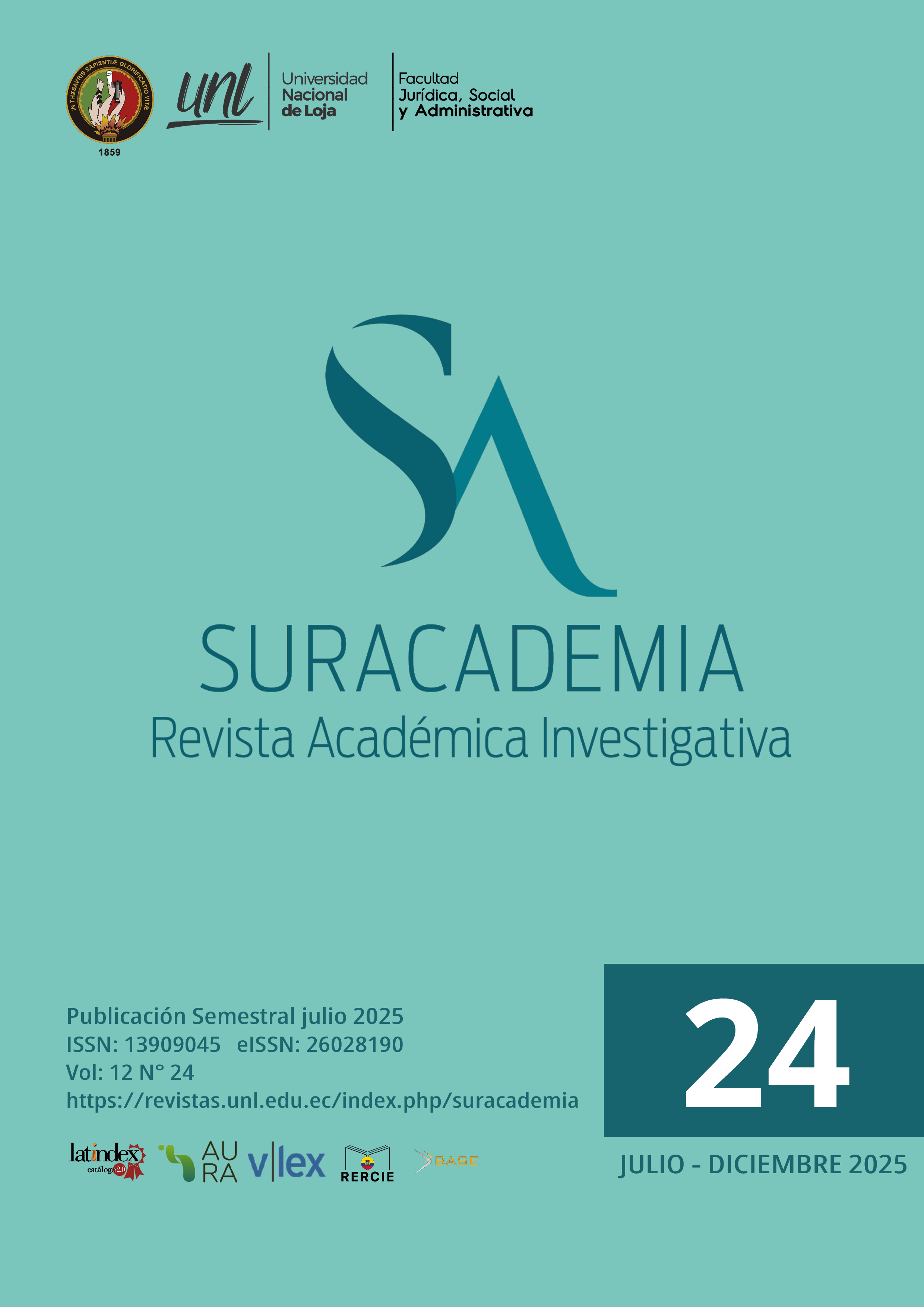ANALYSIS OF THE NINI PHENOMENON: A SOCIOECONOMIC CHARACTERIZATION FOR THE CITY OF LOJA, YEAR 2023.
Main Article Content
Abstract
Keywords: Education, human capital, youth, public policy, inequality.
Article Details

This work is licensed under a Creative Commons Attribution-NonCommercial-NoDerivatives 4.0 International License.
Sur Academia proporciona acceso inmediato y gratuito a todos los contenidos de esta edición electrónica. La publicación no tiene ningún coste para los autores.
References
Aguayo Téllez, E., Mancha Torres, G. L., & Rangel González, E. (2013). Descifrando a los ninis: un estudio para Nuevo León y México.
Álvarez García, B. (2021). Modelos de elección binaria. Obtenido de Modelos de elección binaria: http://alvarez.webs.uvigo.es/teaching_archivos/ectria2_0708/binary.pdf
Becker, G. (1983). El capital humano. Un análisis teórico y empírico referido fundamentalmente a la educación, Alianza, Madrid.
Bergmann, B. (1974). “Occupational Segregation, Wages and Profits when Employers Discriminate by Race or Sex”, Eastern Economic Journal, núm. 1, 103-110.
Buitrón, K., Jami, V., & Méndez, Y. S. (2018). Los jóvenes ninis en el Ecuador. Revista de Economía del Rosario, 21(1), 39-80.
Castel, R. (1997). Metamorfosis de la cuestión social. Una crónica del salariado. Buenos Aires: Paidós.
Folbre, N. (1995). “‘Holding Hands at Midnight’: The Paradox of Caring Labor”, Feminist Economics vol. 1, núm. 1, págs. 73-92.
Gardiner, J. (1997). Gender, Care and Economics., Macmillan, Londres.
Gujarati D. N. y D. C. Porter. (2010). Econometría. 5a ed. McGraw Hill. México, D. F. 921 p.
Keynes, J. (1936). Teoría general de la ocupación, el interés y el dinero; versión en español del Fondo de Cultura Económica, México, 1970.
Leijonhufvud, A. (1968). On Keynesian Economics and the Economics of Keynes: A Study in Monetary Theory, Nueva York: Oxford University Press.
López, G. B. (2019). Generación nini: Jóvenes que ni estudian ni trabajan. Paideia XXI, 9(1), 77-103.
Mascherini, M. (2017). Good practices in dealing with young people who are neets: policy responses at European level. Ponencia presentada en la 2017 Plenary Session Towards a Participatory Society: New Roads to Social and Cultural Integration 28 April-2 May. P. Donati (editor). Acta 21, Vatican City
Morales, S., y Lavayen, M. (2020). ¿Quiénes son los ninis? Una caracterización socioeconómica desde una perspectiva de género en Ecuador: Códigos JEL: E24, E26, J13, J17, J21. Revista de la Facultad de Ciencias Económicas, 2(2), 118-148.
Nuñez Loor, K. E. (2022). Dinámica del fenómeno nini en el área urbana del ecuador, Período 2010–2019. (Bachelor's thesis, Quito: UCE).
Patinkin, D. (1982). Anticipations to the general theory? And other essays on Keynes. Chicago: The University of Chicago Press, 302.
Pautassi, L. (2007). El cuidado como cuestión social desde un enfoque de derechos. Unidad mujer y desarrollo. Serie 87. Santiago de Chile: Naciones Unidas CEPAL.
Schultz, T. (1972). El valor económico de la educación, Tecnos, México.
Serrano, A. (2020). ¿Son todos los Ninis ecuatorianos iguales? Un análisis de sus determinantes. CONTENIDOS, 165.
Strassman, D. (1993). "Not a Free Market: The Rhetoric of Disciplinary Authority in Economics," en Ferber y Nelson, comps.
Tezanos, J. (1998), “Tendencias de dualización y exclusión social en las sociedadestecnológicas avanzadas”, en Tercer Foro sobre Tendencias Sociales: Desigualdad y Exclusión Social,UNED, Madrid.
Tobin, J. (1980). Asset Accumulation and Economic Activity: reflections on contemporary macroeconomic theory. Chicago: University of Chicago Press.
Wooldridge, J. M. (2010). "Introducción a la econometría. Un enfoque moderno". México: Cengage Learning.
Zamorano, E. y Jorge Reza (2002). La nueva economía y el capital intelectual, Instituto Mexicano de Contadores Públicos A.C., México.

